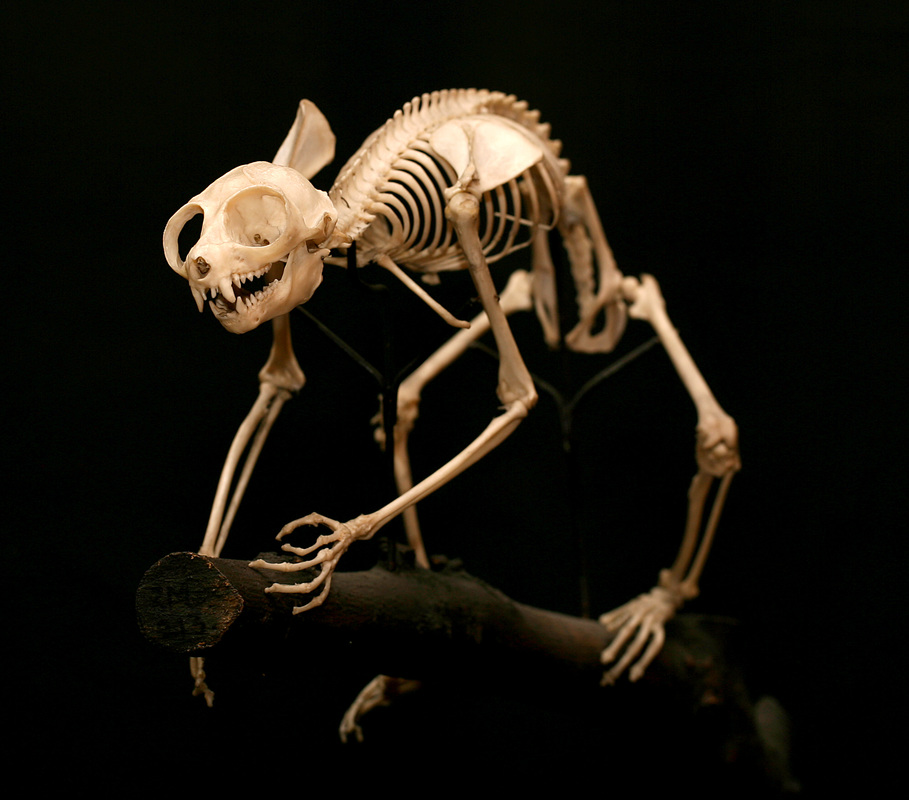Primates
|
Mammals are vertebrates in which the young are nourished with milk secreted by special glands (mammae) of the mother. All mammals possess hair at some point in life, are warm-blooded and four-limbed (except in some aquatic varieties).
Mammals are an extremely diverse group, ranging in size from the largest animal that has ever lived, the 150-ton blue whale, to shrews that weigh only a few grams. There are representatives from all 14 living orders of mammals in the museum including: the skulls of an Asian and an African elephant which allows for intriguing morphological comparison; the skeleton of a manatee; fully articulated skeletons of a range of monkeys and apes including a human; dissections provide a rare glimpse of developing embryos inside the pouch of a marsupial (pouched mammal) compared to inside the uterus of an eutherian (placental mammal); and impressive hunting trophies of hoofed animals including a caribou and a moose. These trophies were collected when big game hunting was popular, as emblems of human vigour and superiority. Fortunately, this ‘sport’ has declined as awareness of conservation and species extinction has increased. These heads portray the beauty of these animals and serve as a reminder of our history. |



